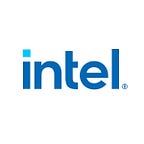Achieving the Future of RANs Together
Author: Chris Moezzi, Vice President Network and Edge Group, General Manager of Intel® Ethernet
Time synchronization is critical to any type of network like enterprise, data center, and communications. Implementing an infrastructure that meets industry standards is a challenging and complex endeavor. In my previous blog, Precision Timing when Every Second Counts, I discussed the importance of time synchronization in 5G virtualized radio access networks (vRANs) and the impact it has on the 5G end-user experience in every day activities like browsing the web, streaming a video, or making a phone call. Time synchronization in a network can even play a role in saving lives as illustrated through the use case example of emergency location services.
Our Intel® Ethernet 800 Series Network Adapter E810-CQDA2T and E810-XXVDA4T are optimized for communications workloads like vRAN deployments and exemplify how Intel is addressing current and emerging challenges in networking by innovating solutions that meet or exceed industry requirements. With the emergence of Open RAN (ORAN) and vRAN deployments, interoperability of multi-vendor hardware and software while continuing to meet timing synchronization requirements is critical to implementing these deployments.
Testing to the Industry’s Time Synchronization Standards
Recently, the European Advanced Networking Test Center (EANTC) held their Multiprotocol Label Switching (MPLS)/Software-Defined Networking (SDN) Interoperability Testing event. It focused on building a multi-vendor network that met the industry’s time synchronization requirements, including the time synchronization standards in 5G and ORAN, using realistic and intricate tests. Notably, EANTC’s interoperability reports are widely respected as they give insight to the state of implementation of innovative network concepts. The EANTC Interoperability Testing Event is gradually becoming more of a recognized milestone (almost an unofficial requirement) in vendor responses to Requests for Information and Requests for Proposals.
The E810-CQDA2T and E810-XXVDA4T network adapters were tested as part of EANTC’s interoperability test event, and I’m pleased to share our successful participation verified these adapters meet or surpass the International Telecommunication Union (ITU) Recommendation ITU-T G.8273.2 (timing characteristics of telecom boundary clocks and telecom time receiver clocks for use with full timing support from the network). These results also validate the tests we ran in our own labs. For EANTC’s interoperability test event, the E810-CQDA2T and E810-XXVDA4T network adapters enabled the COTS servers (also used in the testing) to serve as grandmasters, boundary clocks, or receiver clocks — a capability traditionally exclusive to dedicated and expensive hardware devices.
With 5G vRAN deployments, timing requirements have become more stringent than in prior generations. To measure devices against these requirements, EANTC ran several types of timing synchronization tests ranging from Delay Asymmetry Detection/Measurement to Boundary Clock Class D Conformance. Although our E810-CQDA2T and E810-XXVDA4T network adapters successfully passed all performed time synchronization tests, the Boundary Clock Class D Conformance Test is worth highlighting.
Certified to Meet Today’s Strictest Time Synchronization Requirements
Boundary clocks allow the synchronization of IEEE 1588 clocks across networks and serve to eliminate fluctuations in communication latency. They serve as the time transfer standard between networks defined by routers and other network devices. These clocks enable high-performance applications, such as 5G mobile networks, that demand highly reliable communication with low latency.
While EANTC’s Boundary Clock Class D Conformance Test was not intended to demonstrate interoperability, it did, however, demonstrate the E810-CQDA2T and E810-XXVDA4T network adapters meet Class D specifications — a level of specification difficult to achieve by many vendors in previous years. These adapters passed the conformance tests at port speeds of 10GbE, 25GbE, and 100GbE, certifying that they meet today’s strictest time synchronization requirements and are ready for deployments with these demands.
Enabling Interoperability to Transform RAN
The future of RAN is virtualized and open. ORAN and vRAN deployments will continue implementing multi-vendor hardware and software, making interoperability critical to success. The results of the EANTC MPLS/SDN Interoperability Testing event signify the Intel® Ethernet Network Adapter E810-CQDA2T and E810-XXVDA4T meet today’s most stringent time synchronization requirements and, more importantly, enable interoperability in multi-vendor deployments. Intel’s participation in EANTC’s event built and strengthened stronger relationships and collaboration with industry partners, which aligns with Intel’s strategy and vision of making collaboration a means to innovate optimal solutions that address the ever-growing demands of modern networks. As the journey continues toward greater interoperability and open source, Intel is making strides in turning the future of ORAN into a reality.
Get more details about the tests performed and the observed results in the full EANTC Multi-Vendor MPLS SDN Interoperability Test Report. The report features the Intel® Ethernet Network Adapter E810-CQDA2T and E810-XXVDA4T in the Time Synchronization section. EANTC also presented their interoperability event at this year’s MPLS SD and AI Net World event in Paris held April 18–20, 2023, where participants of the interoperability test event shared their observations and experiences. Attendees had an opportunity to discover and witness devices from multiple vendors successfully working together to meet timing synchronization requirements and exhibit other technological advances in simulated real-world environments.
Learn how Intel® Ethernet 800 Series Network Adapters are optimized for key communication workloads, including mobile core, 5G RAN, and network appliances.
Notices and Disclaimers:
Performance varies by use, configuration and other factors. Learn more on the Performance Index site.
Intel does not control or audit third-party data. You should consult other sources to evaluate accuracy.
Intel technologies may require enabled hardware, software, or service activation.
© Intel Corporation. Intel, the Intel logo, and other Intel marks are trademarks of Intel Corporation or its subsidiaries. Other names and brands may be claimed as the property of others.
References:
Intel Baseline Test Report: ITU-T G.8273.2 Telecom Boundary Clock Conformance Test Results for Timing-Enhanced Intel® Ethernet Network Adapter E810-XXVDA4T. April 2023. Contact an Intel representative to access this report.
